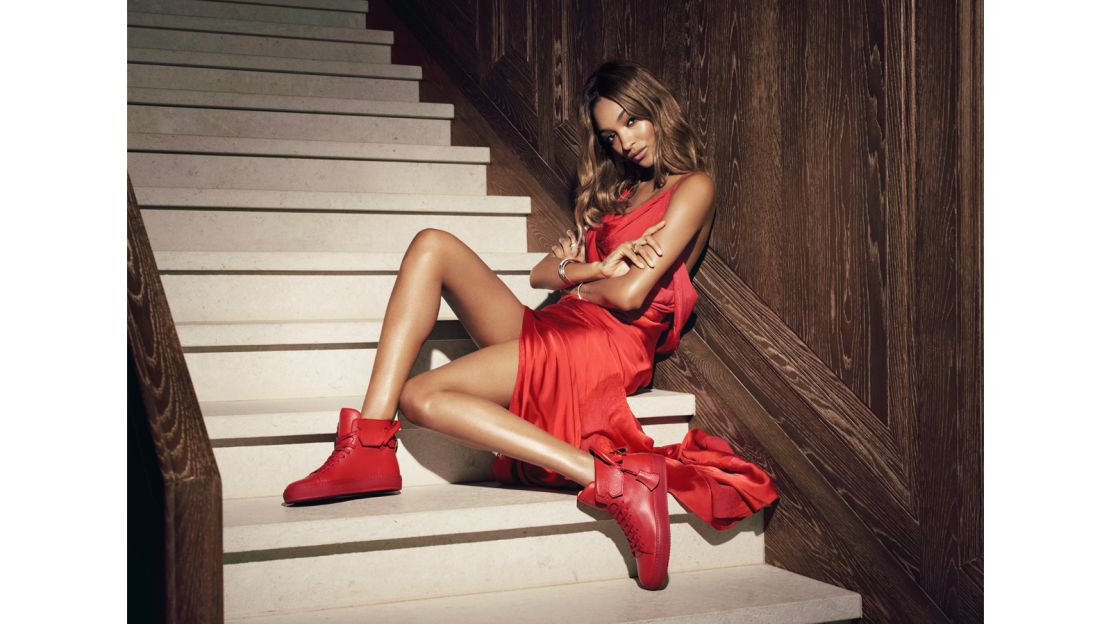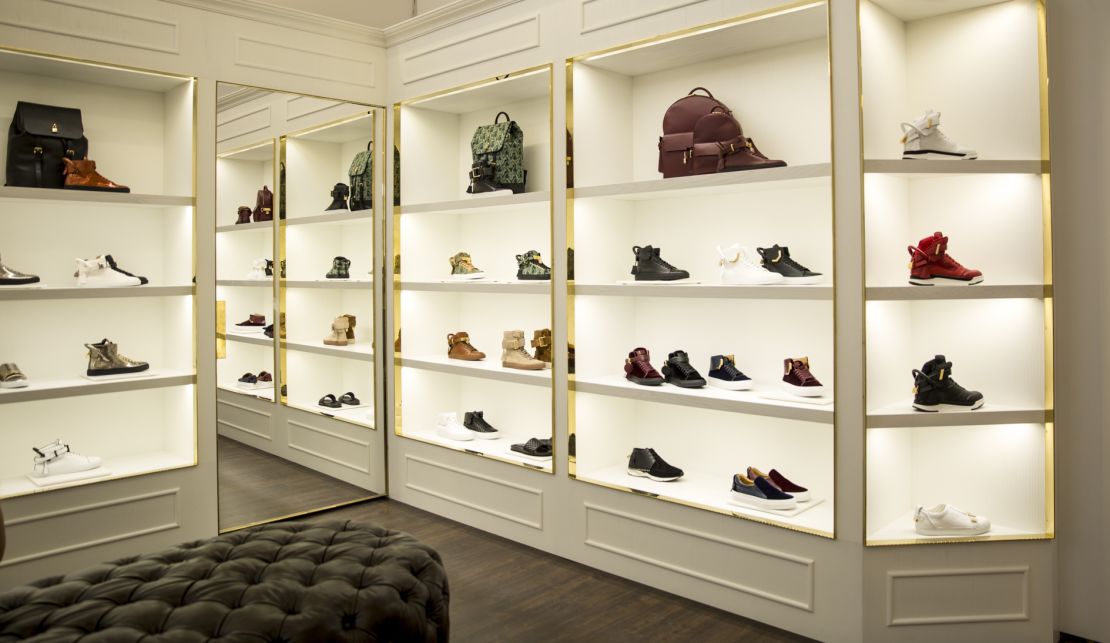Shoppers who enter the Buscemi boutique in downtown Manhattan searching for the footwear brand’s signature leather sneakers are greeted first by five gilded pyramids.
The structures, according to the label’s founder, Jon Buscemi, have significance beyond their role as an eye-catching display.
“It’s a mix to showcase the shoe and to tell the story of going to the beginning, where luxury started,” Buscemi explains. “In Egypt.”
Though the reference Buscemi is making with the tableau is historical, the product he’s using them to highlight is modern. Since the store opened in September, the largest pyramid has housed a one-of-a-kind pair of diamond-encrusted white sneakers that retail for $132,000.
It’s an astronomical sum for a pair of sneakers, but speaks to a strategy Buscemi has employed with great success since launching his namesake brand in 2013.
Buscemi sets a new standard for high-end sneakers
With the appeal of conspicuous consumption waning, Buscemi and like-minded brands are emphasizing the uniqueness of well-made products, and the value of providing an experience for today’s luxury consumer.
“Buscemi is an incredibly smart combination of modern and traditional luxury,” says Ana Andjelic, senior vice president and global strategy director at Havas LuxHub, a consulting firm specializing in the luxury sector.
“He provides ammunition for one’s lifestyle and creates culture codes – versus status symbols – that express certain tastes. Luxury today is less about having money to buy something expensive, and more about having taste to know what to buy.”
Luxury for the modern age

As headline-grabbing as six-figure sneakers are, Buscemi is the first to downplay the importance of a hefty price tag.
“There are brands out there that are very expensive, and the quality just simply isn’t there,” he says. “When I think of luxury brands, I think of brands like Asprey. I think of brands like Hermès.”
The nod to French fashion house Hermès is particularly apt. Buscemi’s first product to market was his 100mm high-top sneaker, which cribs design elements from Hermès’ Birkin bag, one of the most coveted items in today’s fashion landscape.
The sneakers come with 18k-gold-plated hardware, including a decorative lock that mirrors the Birkin’s closure.
“Every woman goes for this bag, and it’s hard to get,” Buscemi explains. “We wanted to have that same vibe with the shoe.”
The Buscemi 100mm shoe was initially conceived as part of an art project, a one-off assortment of everyday luxury items – like leather dog leashes and a coffee sleeve with hand-painted edges – based on the flashy persona of Buscemi’s childhood neighbor on Long Island, New York.

“The shoe was the lead singer in the band and got most of the recognition because it’s something that no one’s seen before,” he says.
And so Buscemi the brand was born. In the time since, Buscemi has introduced nearly 30 different styles of sneakers for men, women and toddlers, most with a price tag that hovers around $1,000.
A growing empire
Buscemi rarely advertises, relying instead on word of mouth. He likens his product packaging to a “symphony orchestra,” and customers can have their sneakers resoled free of charge.

The 20-hour manufacturing process for each pair ensures quality is consistent and, vitally, keeps volume down. This is in direct opposition to the expansion of luxury players like Gucci and Chanel who, according to Andjelic, are “opening up millions of stores, all of which are selling identical stuff.”
“It’s the internet culture. We want to have something that no one among our friends has,” she adds. “When everyone who has a thousand dollars can buy a pair of Givenchy shoes, that’s not luxury anymore.”
The first batch of 100mm sneakers was limited to 600, but Buscemi now produces thousands of pairs of shoes a month, available in 37 countries.
Buscemi is privately owned and doesn’t disclose revenue, but private equity firm Lion Capital, which previously backed John Varvatos and Jimmy Choo, invested an undisclosed amount in Buscemi in November 2015, a show of faith that the brand has room to grow, even with their controlled availability.
As for the one-of-a-kind diamond sneakers, Buscemi says they sold to an unnamed private client.
“We did it for fun,” he says. “It’s great to see that that guy actually exists out there and bought the shoe.”










